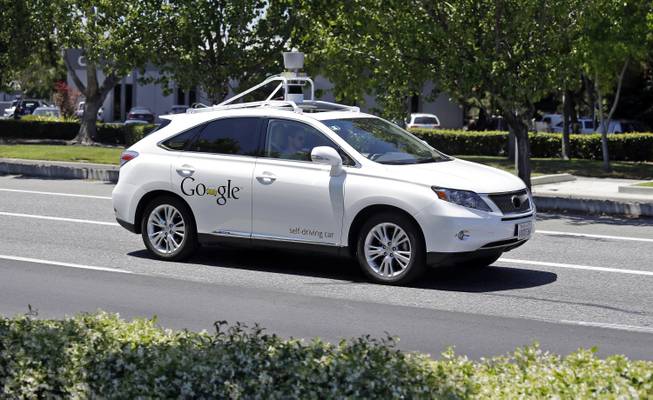
Eric Risberg / AP
This May 13, 2014, file photo shows a Google self-driving Lexus at a Google event outside the Computer History Museum in Mountain View, Calif.
Sunday, Jan. 24, 2016 | 2 a.m.
Tesla Motors CEO Elon Musk predicts that when autonomous vehicles become so safe and foolproof that they eliminate most of the 30,000-plus vehicle-related deaths that occur each year, human-operated cars may be outlawed. Other tech executives say that by the time their young children are 16, they won’t need to learn to drive.
Ford, Honda, Toyota, Google, Tesla and Apple all are working to develop self-driving cars. Some models already have been road-tested.
With momentum swinging toward self-driving cars, is there an existential threat to driving as we know it, an aspect of U.S. culture connected to the fundamentally American concepts of exploration and freedom of the road?
Vehicle enthusiasts, car manufacturers and third-party sellers expressed mixed feelings when asked about autonomous vehicles at the SEMA Show, the Las Vegas auto convention. Many said their comfort level would depend on how and where the vehicles were used, but most said the option for human control — to drive, to feel the road and to experience the speed — must be there.
SEMA attendee Tim Powell, a Washington resident who works on old cars, said self-driving cars could work well for a busy commute on surface streets as long as there was an option to switch to manned driving.
“The fun of driving, you can’t really do that on the street anyway,” Powell said. “If you can flip (self-driving) off when you’re out in the back roads, that’s great.”
Even the most ardent enthusiast, said Scott Brown, a regional communications director for Chrysler, “is never going to tell you there are not times when he wishes he could push a button.”
Some motorheads see autonomous vehicles less as a replacement for manned driving and more as another option for getting around, similar to taking an Uber, bus or subway.
“It’s more a mode of transportation,” said Shane Lloyd, who runs GeckoWraps, a Las Vegas vehicle decal company.
Acceptance of self-driving cars might not come quickly, though.
“I don’t really know if (enthusiasts) are ready for it,” said Harry Weimann, an instructor at an automotive technical school in Pennsylvania. “It’s such a big change.”
Weimann pointed to SEMA as an example of a culture built around speed and power, which some enthusiasts fear will be lost with self-driving cars.
“I want a vehicle I can drive,” Weimann said. “That’s part of the fun of it.”
But John Waraniak, SEMA’s vice president of vehicle technology, said there would always be an option to switch back to manned driving.
“You will always have the button to disengage,” he said during the show. “There’s no doubt about it. It’s a choice.”
Cars, he said, already have significantly more lines of code than some phones and planes. There also are different levels of autonomy, from driver assistance systems to automatic braking.
“We’re basically seeing cars that drive on code,” Waraniak said. “And that is so much safer. ... Even the best Formula One drivers can’t outdo some of those systems.”
Waraniak said autonomous vehicles would save lives while still making driving fun.
“The reason you wear a helmet is so you can play again,” he said. “The reason you have crash protection is so you can race again. This whole point about saving (tens of thousands of) lives, that’s a 747 every week.”

Join the Discussion:
Check this out for a full explanation of our conversion to the LiveFyre commenting system and instructions on how to sign up for an account.
Full comments policy